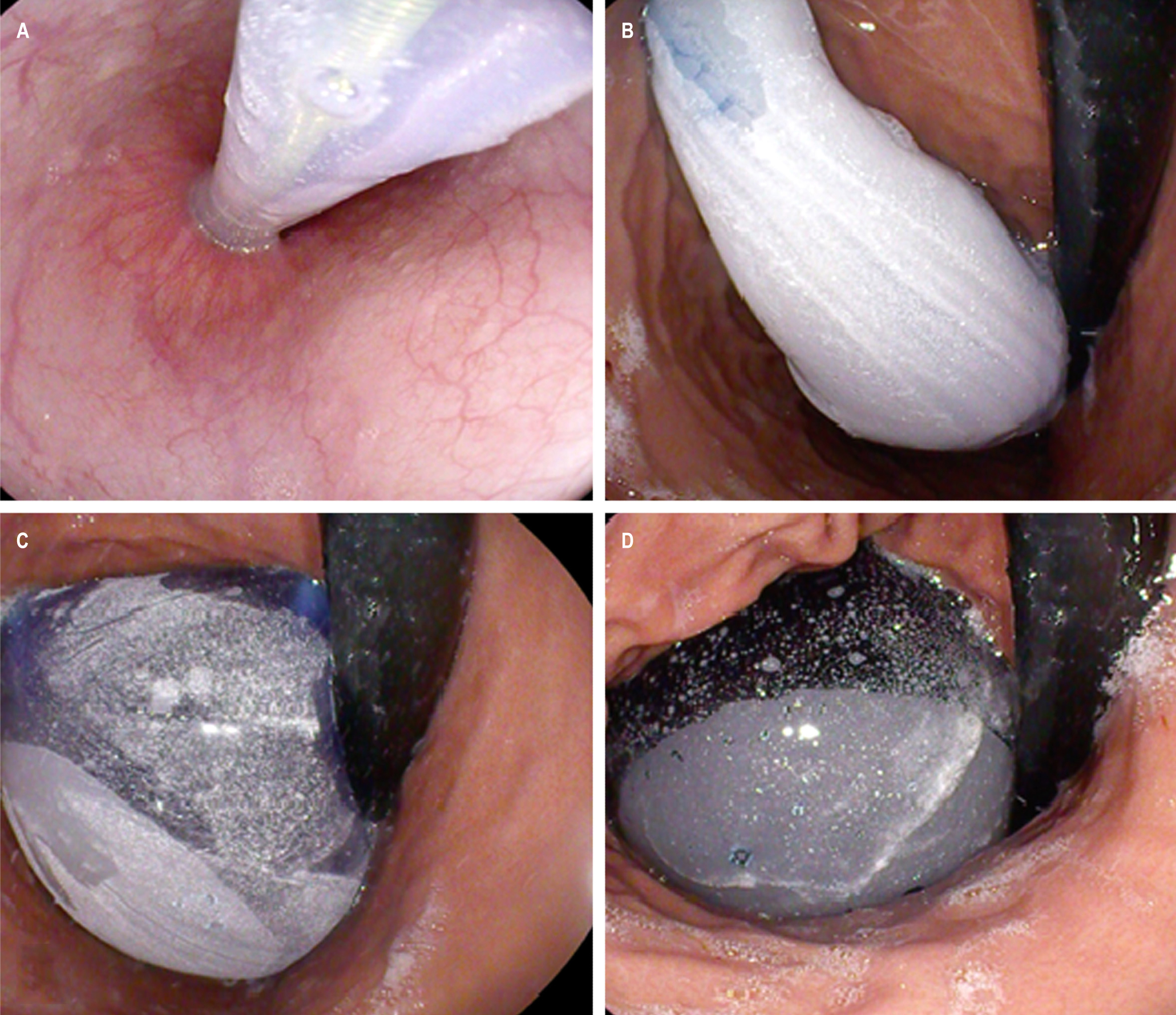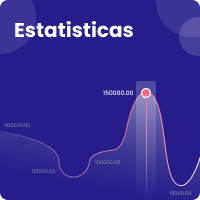Experiencia con el uso de balón intragástrico de contenido líquido para el manejo de la obesidad de riesgo bajo y moderado en un centro de referencia colombiano
DOI:
https://doi.org/10.22516/25007440.950Palavras-chave:
Balón Gástrico, Riesgo, Endoscopia, Manejo de la Obesidad, Pérdida de peso, ObesidadResumo
Introducción: Los balones intragástricos (BIG) de llenado líquido han surgido como opción segura y eficaz para el manejo de sobrepeso y obesidad, en nuestro medio hay poca información acerca su implementación en obesidad de riesgo bajo y moderado.
Objetivo: Evaluar la implementación del BIG de contenido líquido en individuos con obesidad de riesgo bajo y moderado en términos de pérdida de peso, seguridad y tolerancia a 4, 6 y 12 meses de tratamiento.
Materiales y métodos: estudio observacional prospectivo y descriptivo, se incluyeron 109 sujetos con obesidad de riesgo bajo y moderado (IMC de 30 a 40 kg/m2), a quienes se les implantó por vía endoscópica BIG de llenado líquido. Se analizaron las variables: sexo, edad, peso inicial y final, % de pérdida de peso y efectos secundarios.
Resultados: 109 sujetos, 75,22% correspondieron a mujeres, peso promedio fue 87,22kg, con IMC promedio de 31,59kg/m2. Se usaron tres marcas (Orbera n:103, Spatz 3: n:3, y Elipse: n:3). La pérdida de peso promedio presentó diferencias importantes al analizar por meses y marcas: Elipse 4 meses (-4,6kg), Spatz 3: 3 meses (-7kg), Orbera: 6 meses (15,2kg), Orbera 12 meses: (19,7kg). Se logró reducción del IMC promedio a 27,71kg/m2. La tasa de complicaciones fue del 2,75%, 2 (1,83%) por intolerancia (dolor abdominal), y una por apendicitis aguda (0,91%).
Conclusiones: El BIG de llenado líquido es un procedimiento seguro y eficaz. Un período de implantación del BIG de al menos 12 meses es considerado óptimo para obesidad de riesgo bajo y moderado.
Downloads
Referências
Bhaskaran K, dos-Santos-Silva I, Leon DA, Douglas IJ, Smeeth L. Association of BMI with overall and cause-specific mortality: a population-based cohort study of 3·6 million adults in the UK. Lancet Diabetes Endocrinol. 2018;6(12):944-53. https://doi.org/10.1016/S2213-8587(18)30288-2
Kushner RF, Ryan DH. Assessment and lifestyle management of patients with obesity: Clinical recommendations from systematic reviews. JAMA - J Am Med Assoc. 2014;312(9):943-52. https://doi.org/10.1001/jama.2014.10432
Garvey WT, Mechanick JI, Brett EM, Garber AJ, Hurley DL, Jastreboff AM, et al. American association of clinical endocrinologists and American college of endocrinology comprehensive clinical practice guidelines for medical care of patients with obesity. Endocr Pract. 2016;22(Cdc):1-203. https://doi.org/10.4158/EP161365.GL
Dayyeh BKA. Intragastric balloons for obesity management. Gastroenterol Hepatol. 2017;13(12):737-9.
Kumbhari V, Hill C, Sullivan S. Bariatric endoscopy: State-of-the-art. Curr Opin Gastroenterol. 2017;33(5):358-65. https://doi.org/10.1097/MOG.0000000000000383
Saber AA, Shoar S, Almadani MW, Zundel N, Alkuwari MJ, Bashah MM, et al. Efficacy of First-Time Intragastric Balloon in Weight Loss: a Systematic Review and Meta-analysis of Randomized Controlled Trials. Obes Surg. 2017;27(2):277-87. https://doi.org/10.1007/s11695-016-2296-8
Keren D, Rainis T. Intragastric Balloons for Overweight Populations-1 Year Post Removal. Obes Surg. 2018;28(8):2368-73. https://doi.org/10.1007/s11695-018-3167-2
Yorke E, Switzer NJ, Reso A, Shi X, de Gara C, Birch D, et al. Intragastric Balloon for Management of Severe Obesity: a Systematic Review. Obes Surg. 2016;26(9):2248-54. https://doi.org/10.1007/s11695-016-2307-9
De Castro ML, Morales MJ, Del Campo V, Pineda JR, Pena E, Sierra JM, et al. Efficacy, safety, and tolerance of two types of intragastric balloons placed in obese subjects: A double-blind comparative study. Obes Surg. 2010;20(12):1642-6. https://doi.org/10.1007/s11695-010-0128-9
Silva LB, Neto MG. Intragastric balloon. Minim Invasive Ther Allied Technol. 2021;(Cdc):33571068. https://doi.org/10.1080/13645706.2021.1874420
Stavrou G, Shrewsbury A, Kotzampassi K. Six intragastric balloons: Which to choose? World J Gastrointest Endosc. 2021;13(8):238-59. https://doi.org/10.4253/wjge.v13.i8.238
Donato KA. Executive summary of the clinical guidelines on the identification, evaluation, and treatment of overweight and obesity in adults. Arch Intern Med. 1998;158(17):1855-67. https://doi.org/10.1001/archinte.158.17.1855
Wing RR, Hill JO. Successful weight loss maintenance. Annu Rev Nutr. 2001;21:323-41. https://doi.org/10.1146/annurev.nutr.21.1.323
Ali MR, Moustarah F, Kim JJ. American Society for Metabolic and Bariatric Surgery position statement on intragastric balloon therapy endorsed by the Society of American Gastrointestinal and Endoscopic Surgeons. Surg Obes Relat Dis. 2016;12(3):462-7. https://doi.org/10.1016/j.soard.2015.12.026
Neto MG, Silva LB, Grecco E, de Quadros LG, Teixeira A, Souza T, et al. Brazilian Intragastric Balloon Consensus Statement (BIBC): practical guidelines based on experience of over 40,000 cases. Surg Obes Relat Dis. 2018;14(2):151-9. https://doi.org/10.1016/j.soard.2017.09.528
Olmos MÁM, Cancer E, Bretón I, Álvarez V, Abilés V, Abilés J, et al. Balón intragastrico: Revisión de los dispositivos alternativos a los métodos clásicos (Bioenterics). Nutr Hosp. 2015;31(1):84-91.
Gaur S, Levy S, Mathus-Vliegen L, Chuttani R. Balancing risk and reward: A critical review of the intragastric balloon for weight loss. Gastrointest Endosc. 2015;81(6):1330-6. https://doi.org/10.1016/j.gie.2015.01.054
Sander B, Neto MG, Fittipaldi-Fernandez R, Baretta G, Scarparo J, Diestel C. Intragastric Balloon: A Brazilian Multicentric Study of 3545 Cases. Surg Obes Relat Dis. 2015;11(6):S3. https://doi.org/10.1016/j.soard.2015.10.006
Mitura K, Garnysz K. Tolerance of intragastric balloon and patient's satisfaction in obesity treatment. Wideochirurgia I Inne Tech Maloinwazyjne. 2015;10(3):445-9. https://doi.org/10.5114/wiitm.2015.54047
Popov VB, Thompson CC, Kumar N, Ciarleglio MM, Deng Y, Laine L. Effect of Intragastric Balloons on Liver Enzymes: A Systematic Review and Meta-Analysis. Dig Dis Sci. 2016;61(9):2477-87. https://doi.org/10.1007/s10620-016-4178-2
Borges AC, Almeida PC, Furlani SMT, Cury MDS, Gaur S. Balões intragástricos em obesos de alto risco em um centro brasileiro: Experiência inicial. Rev Col Bras Cir. 2018;45(1):12-3. https://doi.org/10.1590/0100-6991e-20181448
Mathus-Vliegen EMH, Alders PRH, Chuttani R, Scherpenisse J. Outcomes of intragastric balloon placements in a private practice setting. Endoscopy. 2015;6(4):12-3.
Fittipaldi-Fernandez RJ, Zotarelli-Filho IJ, Diestel CF, Klein MRST, de Santana MF, de Lima JHF, et al. Intragastric Balloon: a Retrospective Evaluation of 5874 Patients on Tolerance, Complications, and Efficacy in Different Degrees of Overweight. Obes Surg. 2020;30(12):4892-8. https://doi.org/10.1007/s11695-020-04985-4
Al-Sabah S, Al-Ghareeb F, Ali DAM, Al-Adwani A. Efficacy of intragastric balloon for the management of obesity: experience from Kuwait. Surg Endosc. 2016;30(2):424-9. https://doi.org/10.1007/s00464-015-4212-z
Heitkemper M, Jarrett M, Bond EF, Chang L. Impact of sex and gender on irritable bowel syndrome. Biol Res Nurs. 2003;5(1):56-65. https://doi.org/10.1177/1099800403005001006
Fittipaldi-Fernandez RJ, Zotarelli-Filho IJ, Diestel CF, Klein MRST, de Santana MF, de Lima JHF, et al. Randomized Prospective Clinical Study of Spatz3® Adjustable Intragastric Balloon Treatment with a Control Group: a Large-Scale Brazilian Experiment. Obes Surg. 2021;31(2):787-96. https://doi.org/10.1007/s11695-020-05014-0
Abu Dayyeh BK, Kumar N, Edmundowicz SA, Jonnalagadda S, Larsen M, Sullivan S, et al. ASGE Bariatric Endoscopy Task Force systematic review and meta-analysis assessing the ASGE PIVI thresholds for adopting endoscopic bariatric therapies Prepared by. Gastrointest Endosc. 2015;82(3):425-438.e5. https://doi.org/10.1016/j.gie.2015.03.1964
Schwaab ML, Usuy EN, de ALBUQUERQUE MM, Moreira DM, Derossi VO, Usuy RT. Assessment of weight loss after non-adjustable and adjustable intragastric balloon use. Arq Gastroenterol. 2020;57(1):13-8. https://doi.org/10.1590/s0004-2803.202000000-04
Ramai D, Singh J, Mohan BP, Madedor O, Brooks OW, Barakat M, et al. Influence of the Elipse Intragastric Balloon on Obesity and Metabolic Profile: A Systematic Review and Meta-Analysis. J Clin Gastroenterol. 2021;(Cdc):12-3.

Downloads
Publicado
Como Citar
Edição
Seção
Licença
Copyright (c) 2023 Revista colombiana de Gastroenterologia

Este trabalho está licenciado sob uma licença Creative Commons Attribution-NonCommercial-NoDerivatives 4.0 International License.
Aquellos autores/as que tengan publicaciones con esta revista, aceptan los términos siguientes:
Los autores/as ceden sus derechos de autor y garantizarán a la revista el derecho de primera publicación de su obra, el cuál estará simultáneamente sujeto a la Licencia de reconocimiento de Creative Commons que permite a terceros compartir la obra siempre que se indique su autor y su primera publicación en esta revista.
Los contenidos están protegidos bajo una licencia de Creative Commons Reconocimiento-NoComercial-SinObraDerivada 4.0 Internacional.



















